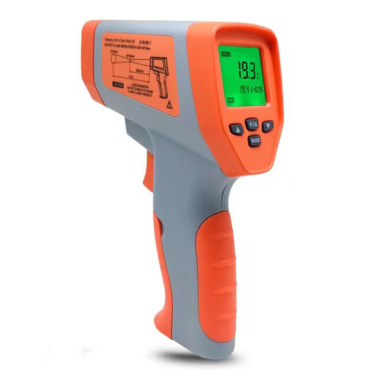
# How to Use an Oven Thermometer for Accurate Baking
## Why an Oven Thermometer is Essential for Baking
Many home bakers don’t realize that their oven’s built-in thermostat can be inaccurate by as much as 25-50°F (14-28°C). This discrepancy can ruin delicate baked goods that require precise temperatures. An oven thermometer provides the true temperature inside your oven, ensuring your cakes rise properly, cookies bake evenly, and bread develops the perfect crust.
## Choosing the Right Oven Thermometer
When selecting an oven thermometer, consider these factors:
– Analog vs. digital: Analog models are affordable and reliable, while digital versions offer quicker readings
– Temperature range: Ensure it covers typical baking temperatures (150°F to 550°F or 65°C to 290°C)
– Durability: Look for models with sturdy construction that can withstand high heat
– Readability: Choose one with clear markings that’s easy to read through the oven window
## Proper Placement of Your Oven Thermometer
For the most accurate reading:
– Place the thermometer in the center of the middle rack
– Avoid touching oven walls or other pans
– Allow it to remain in position for at least 15 minutes after preheating
– For convection ovens, position it where air circulates freely
## How to Calibrate Your Oven Using a Thermometer
Follow these steps to adjust your baking based on thermometer readings:
– Preheat your oven to 350°F (175°C) using the oven’s controls
– Once preheated, check the thermometer reading
– If there’s a discrepancy, note the difference and adjust your temperature settings accordingly
– For example, if your oven runs 25°F hot, set it to 325°F when the recipe calls for 350°F
## Maintaining Your Oven Thermometer
To ensure ongoing accuracy:
Keyword: oven thermometer
– Clean the thermometer regularly with a soft cloth
– Avoid submerging analog models in water
– Check for calibration by testing in boiling water (should read 212°F or 100°C at sea level)
– Replace if the readings become inconsistent or the glass cracks
## Common Baking Problems Solved by Proper Temperature
Using an oven thermometer can help prevent:
– Unevenly baked goods (hot spots in oven)
– Overbrowned bottoms (oven runs too hot)
– Dense cakes (oven too cool)
– Cracked cheesecakes (temperature fluctuations)
## Advanced Tips for Serious Bakers
For those who want to take their baking to the next level:
– Use two thermometers to check for hot spots
– Monitor temperature throughout baking, not just during preheat
– Keep a baking log noting temperature adjustments for different recipes
– Consider a thermometer with a probe for monitoring internal food temperatures
By incorporating an oven thermometer into your baking routine, you’ll gain precise control over one of the most critical factors in successful baking. The small investment will pay off in consistently better results from your oven.
0 thoughts on “How to Use an Oven Thermometer for Accurate Baking”